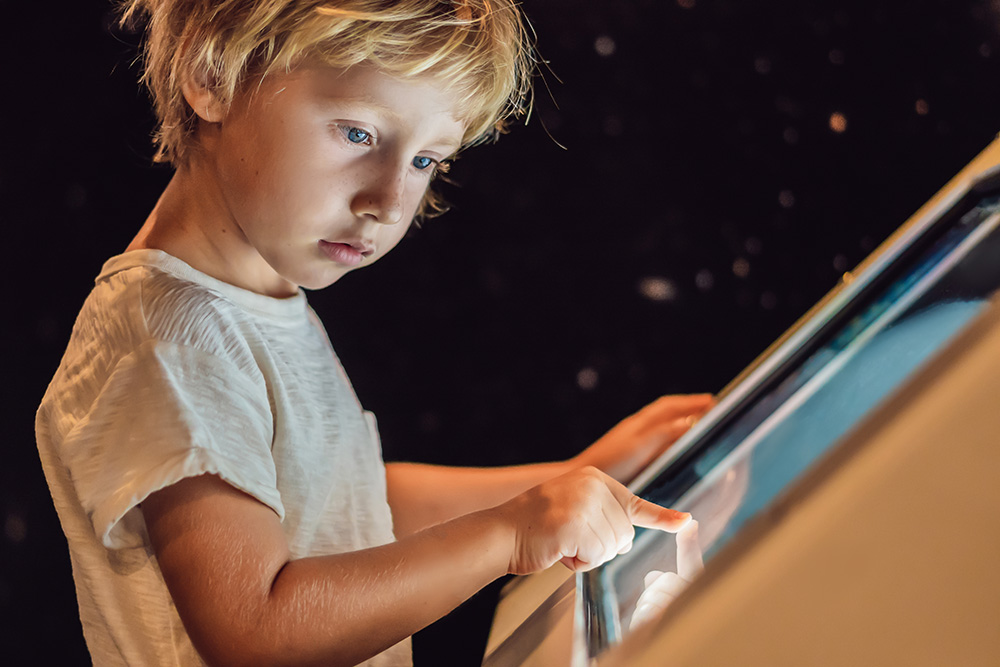Bringing interactivity and collaboration into the New Zealand classroom supports new ways for students to learn. Digital natives are the future and educators now understand the importance of teaching with products that students are more likely to engage with.
Interactive whiteboards (IWBs, or touchscreen whiteboards) are capable of enriching places of business, but we also know that taking them into schools will transform learning environments.
Research shows students have changed over the last twenty years. As a result of a technology rich upbringing, they appear to have different needs, goals, and learning preferences than students in the past. These students need to be better equipped to deal with the ever-advancing digital society they live in and will eventually work in.
Preparing them for the future has always been the hallmark of great teachers, but it’s not as daunting as it appears to be.
A piece of technology that brings the lesson to life, integrating a multitude of elements into their lesson plan, is all it takes, like websites and photos they can visually absorb and audio lessons they can partake in. These types of lessons foster interaction as students can respond and, with an IWB, see their ideas noted down.
An often-cited survey by Willms, Friersen and Milton shows students today are intensely social and interactive learners who want stronger relationships with teachers, each other and their communities.
They want their teachers to know how they learn and desire learning environments that build interdependent relationships that promote and create a strong culture of learning.
In essence, they don’t want to be passive audience members.
Both students and researchers have called for new tools in the classroom toolbox, expanding beyond standard computer stations and overhead projectors to facilitate deeper research and learning, and to build relationships among learners and experts.
Not only do students benefit, a study on IWBs in Australian classrooms found teachers were particularly enthusiastic about how the IWBs had assisted them in routine teach tasks, such as preparation and presentation of resources, saving themselves preparation time in the future.
“The preparation of electronic materials that could be quickly called up on screen also meant that teachers no longer needed to write on a board, making the pace of lessons faster and the transition between lessons quicker and smoother.”
An interactive whiteboard would easily bring a multimedia approach to learning by looking at blogs, wikis, YouTube, video documentaries and a variety of other multimedia avenues.
Five ways to use your touchscreen whiteboard at school:
-
Multimedia presentations – with the short attention spans of young minds, teachers need to be quick on their toes. Adopting new technologies that will impact students in more meaningful ways. Use images, graphs, pictographs, podcasts, short videos, news, or movie and television show clips.
-
E-learning – with conferencing capabilities. Special guest lectures from all over the world will be able to share their expertise. Online software means teachers are able to share notes and other learning tools while it’s up on the whiteboard. Teachers can adopt e-learning options into their curriculum.
-
Diverse learning for students with disabilities – A more comprehensive technological aide can help students with, for example, hearing impairment, learn from visual stimuli.
-
Virtual tours – using Google Earth, take the class on a virtual geography lesson. As well as that, some museums also offer up online tours which allow you to go on a road trip without leaving the building.
-
Video and sound editing – teach kids basic image, sound and video editing is a fantastic breakthrough into future-focused creativity. There are several software products available which can help teachers work on fun projects with the whole class. Get them to edit the videos or images with you. A few fun products to start with are GIMP (free photo editor), and Audacity (free audio editor). For a great overview of video editing software options, have a look here.
Getting students involved isn’t always an easy feat and the functions of an interactive whiteboard create a dynamic education space. And although it may seem like an object of pure utility, the benefits that come with it are far reaching when you consider student participation.
When you have student involvement, you have engaged students who feel a part of something. They may even begin feeling excited about getting into the classroom as soon as the first bell rings.
Interested in an interactive whiteboard for your school?

